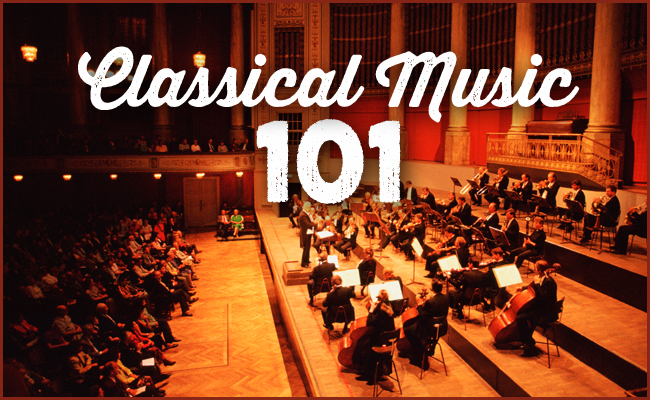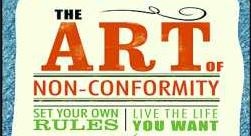
I’ve enjoyed listening to classical music for most of my life. In high school, I’d tune into my hometown university’s radio station at night to listen to Bach and Beethoven while I did my homework. It made me feel smart.
I still listen to classical music today when I work. I also listen to it on Sunday mornings when planning my week.
While I’d listened to classical music since I was young, I didn’t know much about it. Sure, I knew who the great composers were and was familiar with their most famous compositions, but I couldn’t tell what made Bach’s music different from Beethoven’s. Heck, I didn’t even know that calling what I thought was classical music “classical music” was really a misnomer. More on that below.
So, I decided to change that this year. Starting in January, I began reading books on classical music and listening to an audio course on the subject from The Great Courses. It’s been a revelation! While it didn’t make me an expert, when I listen to classical music now, I get more out of it because I know what I’m listening to. It’s made me appreciate what I’m hearing. I’ve also enjoyed learning about the lives of great composers like Bach and Beethoven. Bach was a workhorse, and I admire Beethoven’s Romantic bent (he once wrote that he wanted to “grab fate by the throat” — what an amazing, thumos-filled phrase!).
If you’ve wanted to get into classical music but have been intimidated in knowing where to start, today we begin a series that introduces the genre. The goal is to help kick off your listening journey and appreciation for the music that we call classical.
Which is a nice segue to the first thing I learned in my own listening journey…
Why Classical Music Isn’t Classical Music
If you’re like me before I took this musical deep dive, you likely call all music made with flutes, pianos, and violins, written by dudes who wore powdered wigs and had German last names, “classical music.”
But, yeah, that’s a misnomer.
Technically, Classical music, with a capital C, is a style of Western music that was composed between approximately 1750 and 1827. Beethoven was a Classical composer, but Bach wasn’t (he was a Baroque composer).
If you want to be more precise, you’ll want to call what you call “classical music,” “Western concert music” or “Western art music.”
With that said, I don’t worry too much about using “classical music” colloquially to describe the spectrum of formal, harmonically complex Western orchestral/instrumental music that people typically put under that umbrella. I’ll be using it in that sense in this series.
Western art music/classical music is typically broken into the following eras:
- Greek, Medieval, and Renaissance Eras (2,000 BCE to 1600)
- The Baroque Era (1600-1750)
- The Classical Era (1750-1825)
- The Romantic Era (1825-1900)
- The Modern Era (1900 – today)
Each era had its unique style and innovations.
When you imagine “classical music,” you probably imagine music from the Baroque, Classical, and Romantic eras. And for good reason! These periods produced the giants of Western music like Vivaldi, Bach, Handel, Mozart, and Beethoven. When you tune into your local classical music radio station, you’ll likely hear songs composed during these three periods.
Another thing to point out about classical music is that we typically think of it as “pure music” — music composed for art’s sake rather than for filthy lucre or the masses. You listen to classical music in the background when doing math problems or contemplating Platonic Forms.
Well, I hate to burst your bubble, but even the greats wanted to get paid and be famous. Many great classical pieces were written to get rich and attract an audience. And some of it was downright vulgar (Beethoven composed a song about his digestive issues that mimicked farting).
The fact that great classical music was composed for money and fame shouldn’t take away from its illustriousness. These composers also worked to create art that glorified God and inspired humans to live with virtue. Great classical music transcends time and geography.
Listening to it makes you feel more human and more alive.
The Origins of Classical Music: Ancient Greek, Medieval, and Renaissance Music
To appreciate the most popular styles of classical music, we need to examine the history of Western music before the Baroque Era.
Ancient Greek Music
Music played an integral role in Greek culture. The Greeks believed that music could shape and mold a man’s character and help him understand the cosmos. Music’s power is why Plato thought it was an essential subject for a young man to learn in his youth.
Epic poems like the Iliad were sung and accompanied by lyres and reed flutes, and Greek tragedies were punctuated with music. The music was designed to increase the emotional impact that the words of the poem or tragedy had on the listener.
We only have a few remnants of ancient Greek music notation, so it’s hard to say exactly how it sounded. From the papyrus fragments that have been recovered, we know it was chant-like and monophonic — it had a single melody. The only instruments they used were lyres, cymbals, and reed flutes.
The chanting and simple melody gave Greek music a foreign and frightening vibe. To get a taste of what Greek music likely sounded like, listen to this reconstruction of the Stasimon Chorus from the Greek tragedy Orestes:
Western music maintained this simple, chant-like characteristic for centuries. The ancient Romans adopted Greek music without making innovations to it. It wasn’t until the late Middle Ages that we started to see things change.
Greek music would influence classical music during the Baroque Era. The opera was created to revive the ancient Greek chorus.
Medieval Music
As Christianity rose to prominence in the early Middle Ages, clergy used music to worship God and put people in a contemplative and prayerful mood. The plainchant became the most widely composed and performed music during the so-called Dark Ages. You probably know this style of music as Gregorian chant. Like Greek music, it was monophonic. Unlike Greek music, it was unaccompanied by instruments. One of the defining features of medieval music was that it was primarily voice-driven.
Here’s an example of plainchant music:
Between the years 900 and 1000, musicians developed polyphony, a mixture of two or more melodies heard simultaneously. Organum was the most common type of medieval polyphony. One melody would act as the voice of God — it sounded like traditional plainchant — and the second melody would add flourishes that represented humanity.
Listen to this organum entitled “Pastra nostrum.” Pay attention to the two different melodies:
I really enjoy listening to plainchant music when I’m contemplating or meditating. It does a great job of putting you in a reflective mood.
Another musical innovation was introduced in the 1300s: isorhythm. Isorhythm involves repeating a fixed pattern of pitches and a separate, repeated rhythmic pattern within a musical piece. These patterns might not necessarily be of the same length, so their repetitions could go in and out of sync with each other, creating a rich and complex texture. Isorhythm music in the medieval period was mostly voice.
Here’s an example of isorhythm:
Renaissance Music
Renaissance musicians sought to recreate the ideals of antiquity. Instead of being primarily about worshiping and praying to God, music was seen as a way to evoke emotions in the listener. To accomplish this, Renaissance musicians emphasized vocals that would be heard clearly. They also used the music to reflect the words being sung using a technique called word painting. So, if the lyrics in a song were about someone falling down, the music would try to evoke that image.
New instruments and notation schemes allowed musicians to create more complex and sophisticated music, and the printing press allowed music to spread more quickly and easily.
The most important musical genre that developed during the Renaissance was the madrigal. The madrigal was secular music based on poems that had the following characteristics:
- Polyphonal: madrigals usually consisted of six to eight voices singing simultaneously.
- Word painting: the music mirrored the meaning of the words.
- Emotional expression: the music is composed to make you feel different emotions.
Initially, madrigals were primarily vocal compositions, but as the Renaissance progressed, musicians began substituting some of the voices with instruments like lutes and viols. We’re starting to see the shift away from classical music being primarily voice driven to becoming more instrumental.
Here’s an example of a Renaissance madrigal. Notice the different melodies going on at the same time.
For some reason, I imagine Robin Hood: Men in Tights when I listen to a madrigal.
Here’s an English madrigal entitled “As Vesta Was from Latmos Hill Descending.” It’s a good example of word painting. Notice when the singers sing the word “descending,” the tune sounds like they’re going down a hill:
Well, there you go. A crash course in 4,000 years of Western musical history in about 750 words. We’re now ready to take a look at the big three eras of concert music that produced timeless pieces that we still listen to and perform today: the Baroque, the Classical, and the Romantic.
We’ll turn to them, as well as the Modern Era, in our next piece.
Sources
The Vintage Guide to Classical Music: An Indispensable Guide for Understanding and Enjoying Classical Music by Jan Swafford. Very good introductory book to classical music. Swafford, himself a composer, does a good job showing how the lives of famous composers shaped the music they produced.
How to Listen to and Understand Great Music by Robert Greenberg. This is an audio course from the Great Courses. I highly recommend it. The lecturer, Robert Greenberg (who is also a composer), is incredibly engaging and made learning about classical music fun. He sounds like the comedian Lewis Black. The best part is that he includes samples of the music that he’s talking about.
Tags: classical music






